It’s the chocolate bar that has always seemed a little bit more exotic than the others. Immediately recognisable from the metallic pink wrapping, it was – and still is – seen as a more ‘grown-up’ treat: not one that you’d buy with your pocket money on your way home from school, more the one your mum would have with her Sunday afternoon cup of tea that you’d beg a bite of.
And as a child a bite is probably all you’d want of it; it was quite a sophisticated taste and while the jelly like sweet inside was fairly yummy, much more than that (plus the coating of milk chocolate) was definitely on the sickly side.
Fry’s Turkish Delight was first marketed in the UK in 1914, made by J.S. Fry & Sons. The chocolate manufacturers were based in Bristol but in 1919, soon after the launch of their new and very different sweet they merged with Cadbury’s. The name, Fry’s Turkish Delight, was kept despite this as it had become, by now, a familiar brand.
While Fry’s/Cadbury’s did – and still do - market their chocolate bar as Turkish Delight, it is not quite the same as the proper Turkish delight that you would find when visiting Turkey itself. The sweet that originates from that part of the world comes without a chocolate surround and has a softer, more delicate taste; it’s still a gel and starch based confectionery but without the added preservatives, colourings and artificial flavourings that are put into a product that needs to last on the shelves of a shop.
Pure Turkish delight is created by very slowly boiling sugar syrup and cornflour over a low heat (gelatine can be used to make the process a lot quicker but without this it can be a foodstuff for vegetarians and vegans); the resulting jelly is then flavoured with an essence – usually rosewater or citrus, but occasionally a peppermint or cinnamon oil is used – before being allowed to set, cut into cubes and dusted with a lot of icing sugar. In the Middle East it’s served with tea and coffee.
There are conflicting historical claims to the roots of Turkish delight: one story hails from 1776 where it’s said that a confectioner, Bekir Effendi, opened a shop in Istanbul where he experimented with a new sweet called ‘lokum’ (derived from the Arabic word ‘luqma’ meaning ‘morsel’). So sweet and lovely was his new delicacy that word spread quickly and people flocked to his shop to buy it. It was then discovered by the Sultan who had it brought to his court. His approval ensured that lokum became phenomenally successful. (Another tale has a Sultan’s chefs creating lokum so that he could court his mistresses with it.)
Whether the legend of Bekir Effendi inventing lokum is true or not (and many historians believe it is not) his shop still stands in Istanbul and is still selling the sweet stuff.
How it got to our shores is slightly vaguer: it’s reported that a visiting Briton grew fond of lokum and exported it back to the UK which is probably very close to the truth. However it happened, years later J.S. Fry & Sons came up with the novel idea of creating its own version and then covering it with chocolate, before Cadbury’s continued the practice when it absorbed the smaller company (Cadbury’s continues to sell it 100 years later, as well as its own variety, Dairy Milk Turkish).
Almost as famous as the bar itself in this country is the most famous advertising campaign for it from the 1970s, which matched the Flake for all-round chocolatey sexiness.
No pretence was made at realism, as the meant-to-be-Arab couple were played by obviously white actors and the plot was slightly strange, but it was still jolly sexy. A beautiful but sad woman lies waiting in the desert - we’re not entirely sure why she’s upset, but luckily her tears don’t spoil her incredibly well-maintained (for this particularly hot and sandy part of the world) make-up – until her white-clad hero arrives to give her some chocolate, which miraculously hasn’t melted and which he kindly chops up using his extremely lethal-looking sword. After getting this she cheers up, whilst he sits moodily on a sand dune. Oh, and there’s a snake wiggling about as well. Sexy Eastern music plays over the top (although it appears to be played on the panpipes which aren’t a massively erotic instrument if I’m honest) and it ends with a sexy voiceover: ‘Fry’s Turkish Delight…Full of Eastern promise.’ So there you go: if you’re miserable in the desert you just need a sugar hit. Although how she would have eaten it without getting sand in every mouthful beats me.
Lokum is popular all over the world under very similar names (although in the Turkish part of Cyprus its moniker is ‘Cyprus Delight’) and can also be found in many different varieties, including with bergamot or mastic flavourings or infused with chopped pistachios, dates, hazelnuts or walnuts.
Thankfully the name ‘Turkish Delight’ took off in England as apparently at one stage it used to be known as ‘Lumps of Delight’ which quite frankly doesn’t make me think of confectionery…




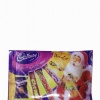
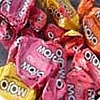


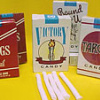
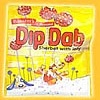

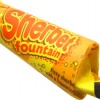
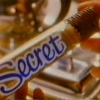

Do You Remember Fry's Turkish Delight?
Do You Remember Fry's Turkish Delight?